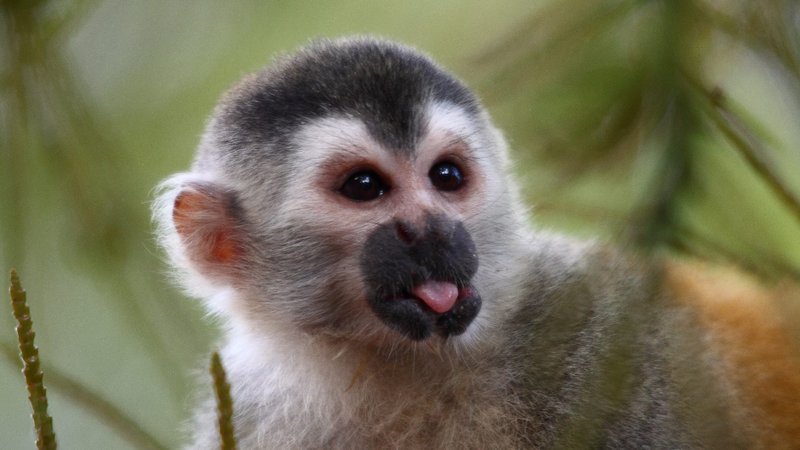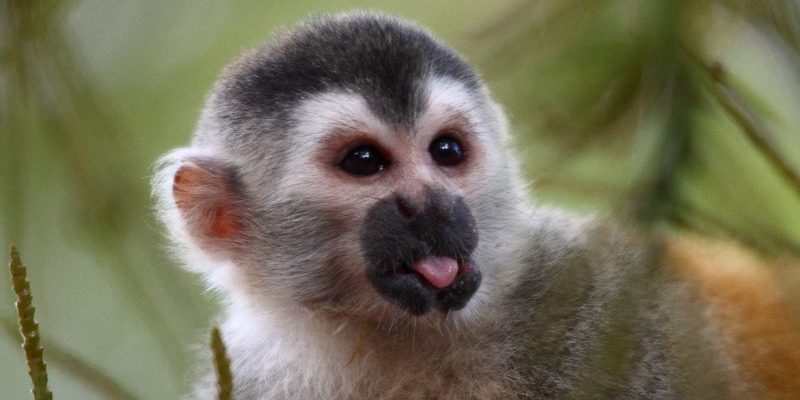
Imagine for a moment that you’re a titi monkey, happily leaping from branch to branch in a lush rainforest. However, as you look around, you start to notice fewer trees and fewer friends. That’s the reality these primates are facing. With their habitats disappearing, they’re not just facing a tough day—they’re facing extinction. In this article, we’ll explore the various factors contributing to their endangered status, what conservation efforts are underway, and how we can all play a part in ensuring these charming monkeys continue to thrive.
What Are Titi Monkeys?
Titi monkeys are small primates belonging to the Callicebus genus. Known for their long tails, vibrant fur, and strong pair bonds, these monkeys are usually found in the canopies of tropical forests. They have a delightful social structure, often living in family groups that help raise their young together. One fascinating aspect of their behavior is how they communicate; they use a range of vocalizations that sound almost like a conversation, making them quite charming to observe.
The body length of a titi monkey can range from about 14 to 26 inches, and they weigh between 3 to 8 pounds. Their fur varies in color, from yellow and orange to black, depending on the species. They are diurnal creatures, meaning they are active during the day, which gives you a great chance to catch a glimpse of them frolicking in the trees. It’s this vibrant lifestyle that makes them not just significant to their ecosystem, but also appealing to those of us who appreciate the beauty of nature.
So why should we care about titi monkeys? Well, beyond their cute looks and entertaining behaviors, they play a vital role in their ecosystems. As they move through the trees, they help with seed dispersal, contributing to the health of their forest habitats. Protecting them helps ensure the balance of the entire ecosystem.
Why Are Titi Monkeys Endangered?
You might be wondering what’s putting these delightful creatures at risk. Unfortunately, the biggest threat comes from deforestation. As humans continue to clear land for agriculture, logging, and urbanization, titi monkeys find their homes fading away. Think of it this way: if you suddenly lost access to your favorite coffee shop and local hangout, your daily routine would feel disrupted. For the titi monkeys, their entire habitat and way of life are at stake.
Another concern is the illegal pet trade. Titi monkeys are often captured and sold as pets, which not only endangers their population but also disrupts their social structure. Imagine being taken away from your family and placed in a completely unfamiliar environment. It’s not just stressful—it can be life-threatening.
Additionally, climate change is a looming threat. As temperatures rise and weather patterns shift, the delicate balance of the forests they rely on is affected. Drier climates can lead to food shortages, while increased storms can destroy their habitats. All of these factors combined create a perfect storm that puts titis at risk.
The Conservation Status of Titi Monkeys
Currently, many species of titi monkeys are classified as endangered or even critically endangered on the IUCN Red List. This designation means that their populations are rapidly declining and face a high risk of extinction in the wild. The specific status varies among the different species of titi monkeys; for example, the red-bellied titi monkey (Callicebus moloch) is listed as endangered, while others may be classified as vulnerable.
Conservationists are working tirelessly to protect these animals, but the challenges are steep. Habitat protection, anti-poaching laws, and community education all play a vital role in ensuring titi monkeys have a shot at survival. It’s like trying to patch a leaky boat while still trying to keep it afloat. The effort is ongoing and requires the commitment of multiple stakeholders, including local governments, non-profits, and international organizations.
Current Conservation Efforts
Many organizations around the world are actively involved in conservation efforts for titi monkeys. These initiatives focus on various aspects of preservation, including habitat restoration, community engagement, and research. For instance, some programs work directly with local communities to promote sustainable practices that minimize deforestation. Think of it as partnering with your neighbors to keep your block clean rather than waiting for someone else to do it.
Additionally, there’s a growing emphasis on establishing protected areas where titi monkeys can safely thrive without the threat of habitat loss. These areas help preserve critical ecosystems, allowing other wildlife to flourish as well. It’s a win-win situation!
Research plays a crucial role in conservation too. Scientists are studying titi monkey behavior, population dynamics, and genetics to better understand their needs and how to help them survive. The more we know, the more effective our interventions can be.
How Can You Help Titi Monkeys?
Feeling inspired to make a difference? There are plenty of ways you can help titi monkeys and support conservation efforts. Here are a few ideas:
- Educate yourself and others: Share information about titi monkeys and the challenges they face with friends and family. Awareness is the first step in creating change.
- Support conservation organizations: Consider donating to or volunteering with groups that work to protect titi monkeys and their habitats. Every bit helps!
- Advocate for sustainable practices: Whether it’s choosing products that support sustainable forestry or reducing your own carbon footprint, small changes can make a big impact.
- Visit responsibly: If you’re traveling to areas where titi monkeys live, support eco-friendly tourism practices that respect wildlife habitats.
Even simple acts, like choosing sustainably-sourced products or reducing plastic use, contribute to a healthier planet, benefiting all wildlife, including the titi monkey.
The Future of Titi Monkeys
The future of titi monkeys hangs in the balance. While the challenges are significant, the ongoing efforts from conservationists, local communities, and global support offer a glimmer of hope. Imagine a world where titi monkeys frolic freely in their natural habitats, raising their young and swinging through the trees without a care in the world. That’s a world worth fighting for.
It’s crucial for us to recognize that every small action counts. Protecting these monkeys isn’t just about saving a single species; it’s about maintaining the balance of our ecosystems. By taking steps to support conservation and raising awareness about the plight of the titi monkey, we can all contribute to a brighter future for these adorable primates.
So, the next time you hear about titi monkeys, remember their incredible journey and the importance of keeping their world alive. Let’s work together to ensure they remain a lively part of our planet for generations to come.

